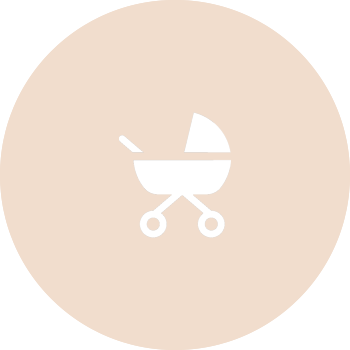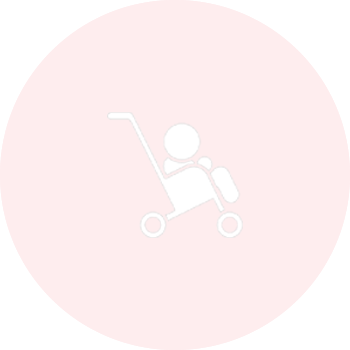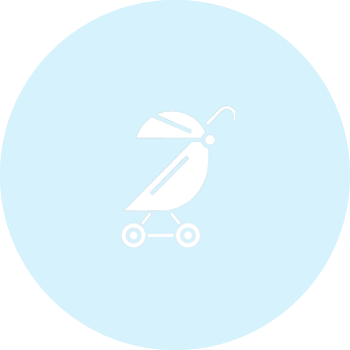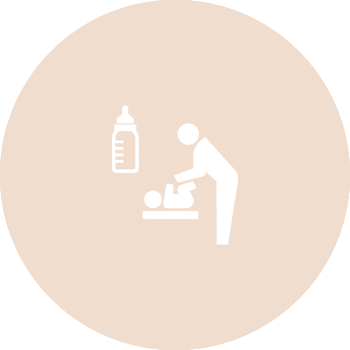Baby Mealtime: Uncovering the Ideal Feeding Method for You Both
We understand the importance of discovering the feeding approach that suits both you and your baby, yet achieving a balance between health, comfort, and convenience can prove challenging. In honour of World Breast Pumping Day, we aim to delve into the advantages and obstacles of breast, pumping, and bottle feeding, aiding you in finding the formula that aligns with your body and lifestyle. Additionally, we'll recommend some of our favourite feeding products to ensure you're well-prepared for every stage of the baby feeding journey, regardless of the path you choose.
Breastfeeding: Benefits and Best Practices
Breastfeeding offers significant emotional and physical benefits for both mother and baby. Packed with antibodies that boost immunity, breast milk adapts to meet your growing child's needs, shielding against various infections and conditions such as vomiting, diarrhoea, and eczema. Moreover, breastfeeding supports maternal health by reducing the risk of ovarian cancer, osteoporosis, and obesity. It fosters a sense of intimacy and bonding between mother and child, facilitated by the release of oxytocin, a hormone that reduces stress and promotes maternal instincts.
However, while breastfeeding offers numerous advantages, it can also pose challenges. From sore nipples to breast engorgement and mastitis, mothers may encounter physical discomfort. Additionally, variations in milk production levels can cause concerns, leading some to explore alternative feeding methods like pumping or bottle feeding.
Getting started
For those opting for breastfeeding, adequate preparation is key. The World Health Organization recommends exclusive breastfeeding for the first six months, followed by continued breastfeeding alongside complementary foods for at least two years. Proper positioning during breastfeeding ensures comfort for both mother and baby. Utilizing a breastfeeding pillow can enhance support and comfort, facilitating a positive feeding experience.
Moreover, addressing the practical aspect of breastfeeding in public is essential. While it may initially seem daunting, breastfeeding in public is a natural and beautiful act. Consider investing in nursing tops and covers for added privacy and comfort during public feeds.
Breast Pumping
Breast pumping offers flexibility for mothers seeking control over their feeding schedules or those on-the-go. It allows for milk storage, ensuring a continuous supply even when breastfeeding isn't feasible. Regular pumping sessions can also help boost milk production. However, similar to breastfeeding, pumping presents its challenges, including noise and time constraints.
Choosing the Right Pump
Selecting the right pump is crucial for an effective pumping experience. Opt for a pump with adjustable speed settings to ensure comfort during pumping sessions. Consider portable, hands-free options like the Elvie Single Pump or Elvie Stride Breast Pump for added convenience.
Storage Considerations
Proper storage is essential for maintaining the freshness and safety of expressed breast milk. Follow guidelines for safe milk storage, including time limits for room temperature, refrigeration, and freezing. Investing in milk storage bags and cooler bags can aid in proper milk storage while on-the-go.
- At room temperature: Up to four hours
- In the fridge: Up to four days
- In the freezer: Best for around six months, acceptable for up to 12 months

Bottle and Formula Feeding
For mothers who prefer neither breastfeeding nor pumping, bottle and formula feeding offer convenience and flexibility. Bottle feeding allows for precise control over feeding schedules and quantities. However, it's important to note the differences in immunity provided by formula compared to breast milk.
Weaning and Feeding on the Go
As your baby reaches the milestone of weaning, introducing solid foods becomes paramount. Every baby's weaning journey is unique, and progress should be tailored to their individual pace. Additionally, preparing for feeding on-the-go requires the right tools and accessories, such as lunchboxes and drink bottles, to ensure your baby's nutritional needs are met during outings.
Stage 1: Introducing Baby to Solids (4-6 months)
Start with a few teaspoons of solid food per day without reducing their current milk intake. Introduce purees and soft or cooked vegetables like avocado or broccoli to encourage chewing. Consider using food processors to aid in food preparation at this stage.
Stage 2: Exploring New Flavors (7-9 months)
By now, your baby should be accustomed to stage one solid foods, allowing you to experiment with different flavours more frequently, typically 2-3 times a day. Begin reducing their milk intake and introduce foods such as mashed vegetables, yoghurt, soft meats, or cooked pasta.
Stage 3: Transitioning to Balanced Meals (10-12 months)
At this stage, the majority of your child's nutrition should come from solid foods, marking a shift from milk dependency to complete solids. Introduce firmer foods and consider offering smaller portions of family meals to encourage independence and diverse eating habits.

In conclusion, there is no one-size-fits-all approach to feeding. Whether breastfeeding, pumping, or bottle feeding, the best choice is the one that aligns with your lifestyle, health, and preferences, ensuring the well-being of both you and your baby.





















